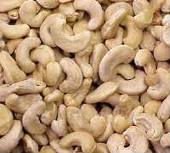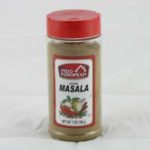Food has always been a welcoming venue in my parents’ house. Back in my mother’s days in the Middle East, a woman must know how to cook in order for her to be ready for marriage. Of course, this is a line my mother used on me while I was growing up in the United States. This line was not welcomed in my territory. But I had to learn how to cook when I did marry. My mother could not cook for me, she was still dealing with my spoiled brothers who, even after they were married, would call her to cook for them and their families. My mother was a great cook, as she was applauded for it by her twelve kids( I’m the ninth child). My dad would invite his friends for dinner, and she will provide a variety of mouth watering dishes, as usual. Even when my brother’s friends came over, she would cook something that was very traditional and very tasty. Although we had a big family, my mother was always up to welcoming our guests with a variety of foods with same day preparations. Sometimes she would cook two different meals to please the palates of her kids. As we grew older , five out of my seven brother married outside of our culture and introduced us to a whole new world of taste. Growing up in a diverse home, of multicultural and mutli-racial home, many ethnic foods were part of our celebrations and daily meals. I was open minded to try out what looked appealing to me. As I continued to hold on to my mother’s legacy, I carried on her magical touch when I started my own family; as the saying goes, “like mother, like daughter”. I even married a man who was open minded in trying different foods, so happy. My husband’s brother who was Desi (Indian and Pakistani) food fanatic. Once I got married, traditionally of course, he would invite my husband and I to Desi restaurants once a month. He was very generous, right! The only Desi food I ate before marriage was Biryani, which was any meat on the bone with rice and depending on the region would include potatoes, or boiled eggs, and tomato curry with spices and chilies. Once my brother-in-law was part of my new family, I got introduced to more delicious varieties of the Desi (Indian and Pakistan food). Spicy Tandoori mix, Chicken Curry, Seeing him sweet as he eats, this guy was feeling that heat and great taste of the curry. But, the magical mouth watering, creamy and mild tasting Butter Chicken was what would be the ultimate and beautiful taste of Indian and Pakistani food, Desi, although he was not from that region.
Butter Chicken also called Murgh Makhani in Hindi has a little twist to time and origin and for the sake of researching different websites to find what most share to be the legendary story. From one view, the recipe originated in the 1920’s by K. Gujral who ran a roadside restaurant in Peshawar Food.This recipe has many doubting its originating region, whether it was Indian or English. Another website suggests that it was originated during the Mughals ruling, “Muslim emperors who ruled India for some centuries …who were fond of royally rich cuisine.. and bold curries”(Eat Your World). According to Shafali, the recipe did definitely originate in Delhi “the capital territory of India sometime during the 1950’s.” Shafali claims that K. Gurjal ran a street restaurant called Moti Mahal in Delhi after fleeing political persecution from another region in India. The restaurant was known for its rich tandoori dishes, where chicken was cooked in a circular clay oven called tandoor. Sussle Visual Encyclopedia describes the dish as chicken in a mildly spiced curry sauce from the roots of the Punjabi cuisine. left over tandoori chicken is cooked in a tomato and cream sauce which gives it a mild taste and appealed to customers around the world with its less traditional heat and spiciness of Indian cuisine.
After tasting Butter Chicken many times at different restaurants, I decided to try out a recipe I found on a jar of spices about seven years ago. My family fell in love with it. I would surely follow unto my other’s footsteps by inviting my kids friends during our Ramadan, our month of fasting where we break our fast at sunset and feast. My kids’ friends even those who were from Pakistan agreed that it was great. But that recipe took hours and a day ahead to work on. I had to marinade the chicken the night before and grill on electric grill then start making the sauce. This was tiring. So little by little, just like the many chefs in India who kept on changing and trying out new additions to the original recipe, I would alter and change that recipe till it fit into my time and taste. Food Detective Diary states that there more than 50 versions of the Butter Chicken recipes today and the only common ingredient is chicken. I myself had around three to four different recipes which I have changed to suit out palates and to ease time. I just had a before Thanksgiving holiday and even my friends await the inevitable Butter Chicken. The I hear “Yeslamo idaiki” in Arabic, which means bless your hands. A mouth watering dish where old and young of many cultures who enjoy this somewhat simplified recipe at any gathering or occasion. To be honest, this is my imperfect and open for perfection recipe, where I keep adding spices and cream when there is too much liquid or less sweetness from the tomatoes. So, You really must have tasted Butter chicken or It’s sister recipe “Tikka Masala” to be able to add on to or reinvent the recipe to get that palate shouting for more, at least that is how I started. On the Health side, this recipe is an artery blocker if eaten often, too much cream and butter used, not good for your heart! It really tastes good, so moderation and a little abstinence is, followed with healthy exercise would probably be the safe heaven for those who are in good healthy standing. But a Great tasting dish from western Asia mixed with little love of this and that to please the palates of many Americans.

COMMO & KO. Limited – Nuts,Fruits
Ingredients
1. 3 lbs boneless skinless chicken breast cut into bite size pieces
2. 1 can(14 or 15 oz.) pureed tomatoes
3. 1 tablespoon lemon juice
4. 1- 8 oz. coconut cream
5. 1-cup heavy whipping cream
6. 1 onion, chopped medium
7. 2 tablespoons butter and 2 tablespoons olive oil
8. 1 tablespoons ground coriander
9. 1/2 teaspoon salt
10. 1/2 teaspoon graham masala
11. 1/2 chicken masala
12. 2 tablespoons butter chicken seasoning( I prefer SHAN brand)
13. 1/2 cup raw cashews soaked for at least 2 hours in cold water
14. 1 teaspoon of each garlic paste and ginger paste
15. 1 tablespoon of freshly chopped cilantro(for garnish)

International Foods | International Groceries
Direction
1. Mix butter chicken seasoning and lemon juice in a 1/4 cup of water pour over chicken then mix in the ginger and garlic paste and set aside for half hour.
2. Saute onion in butter and oil till caramel in color. Using a hand blender cream the onion in the same pot. If hand blender not available, use a food processor then return to pot.
3. Add the pureed tomatoes, chicken, coconut cream, and the heavy whipping cream.
Bring to a boil for 5 minutes, add the graham masala and the chicken masala seasonings,
mix into chicken well, cover pot and simmer for 30 minutes.
4. Strain the cashews then cream into a paste by a food processor. Mix into the chicken.
simmer for 10 more minutes till chicken is tender.
pour into plates and garnish with cilantro. Serve with hot cooked basmati rice or naan bread, Enjoy!


